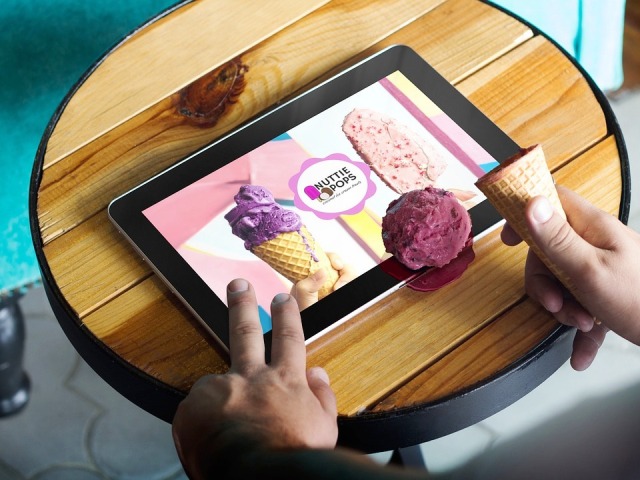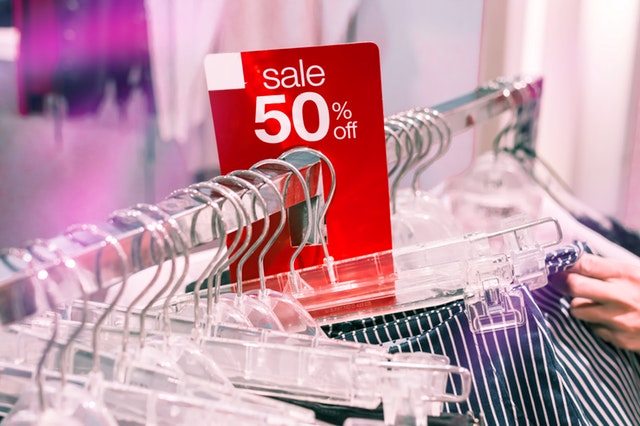Get Them to Buy Now—How to Write Sales Pages That Convert
Sales pages are not equal.
Some have giant blocks of text and are boring to read, others have no pictures whatsoever, while others are downright confusing.
And then there are sales pages that convert prospects into buyers. They explain products and services to readers so well they make them want to buy.
A sale is a business owner’s most coveted conversion.
Getting someone to sign up for your newsletter or download a free eBook is easy. These are low-commitment, no-cost conversions.
However, getting them to click on the "buy" button is a different story altogether. They have to part with money they've worked so hard for. In most cases, there is no promise of a refund and they have to believe that your product or service will provide the solutions you've said it will.
Your offer will be highly scrutinized, which is why you have to be very persuasive.
A sales page can turn people who are just looking into buyers. It is designed with one purpose: to convert. Its aim is to convince people to buy a service or a product. A sales page must be extra persuasive and must contain social proof and lots of testimonials.
Writing a sales page that converts is a process. You must familiarize yourself with the best practices and also know what's best for your audience.
If you're wondering how to create a sales page that converts right away, here’s how to go about it.
Know Your Audience
Good sales people know their target audience and what they are struggling with. They don't sell services or products, they sell a better life. They make people happy by solving their problems.
If you don't know who you're selling to, you won't be able to sell your product. The first thing you should do before you start writing your sales page is niche down your audience. Survey them, question them, study them, and observe them.
The more you know about your audience, the better your sales page will be. If you're selling your products to consumers, note down their gender, age range, geographic location, and even occupation. If you're selling to businesses, write down the business size, type, and market.
Think of the problem your product or service solves. How does it help people to achieve their goals? Once you come up with the answers to these questions, you'll be able to create a value proposition (a promise of value to be provided).
Make Your Offer Clear
If your offer is complicated, it will turn potential customers away. If someone lands on your sales page and doesn't understand what you're offering, they may not stick around to try and decipher your message.
The headline of your sales page must instantly intrigue your potential customer. Headlines in sales pages are usually longer than those on other pages. This is because they are not just titles, they function as a hook.
The headline of your sales page should be an explanatory statement or sentence that tells the customer the benefits of your product or service. How will your product change or benefit them? Why should they care about its features?

If you're used to writing short headlines, writing a longer one may feel uncomfortable. However, the more descriptive your headline is, the more likely it is to encourage people to keep reading.
Research has shown that negative superlatives, like “worst,” perform much better in headlines than positive ones. You can also use surprise to capture the attention of potential customers. Surprising headlines are powerful because our brains love novelty. Surprise captures the attention of prospects and interest holds it.
In your headline, make an offer people can't refuse.
Determine the Right Length
The best sales pages are brief and have just enough content to convert. However, this doesn't mean that shorter sales pages are better. Long sales pages definitely have their place.
Maybe potential customers have never heard of your product and need to be educated first before making a purchase. Maybe they are not aware of their own pain. Or maybe your product is super expensive or very complex. In these situations, you need a long-form sales page to set the stage for conversions.
Your sales page needs to be long enough to get the job done. Its length depends on how your visitors respond and what the copy is for. Long copy allows you to deal with more customer objections. By the time people click the Call To Action (CTA), they are totally convinced.
If you can explain your offer simply, don't add more content.
Some long sales pages include both long and short copy. The short copy helps you to make the case for those who are already convinced. It is usually accompanied by a CTA near the top of the sales page. The long copy is meant for those who are less easy to convince and usually includes a couple of CTAs.
So, how do you know which sales page will persuade your audience?
Test. Testing is the only way to determine which sales pages convert and which ones do not.
Get the Price Right
Once your potential customers are convinced about the value of your product, they will scroll down to check the price. If it scares them away, you may never see them again.
Nothing has a bigger impact on your sales page's conversion rate than the price of your product. When you know your audience well, you'll be able to come up with the perfect price point. What have they purchased in the past? What are they looking for now?
Here are some proven pricing techniques you can try to increase conversions:
- Offer more than one price point. Most sales pages usually have 3 price points and people usually go for the middle one as they feel it offers better value
- Make sure the price ends with a “9” or a “99”. Research has proven that more people tend to gravitate towards these figures
- Use descriptive names for your price points. This helps people to self-select.
- Anchor your prices. Price anchoring is one of the most popular marketing tactics used in every industry. It means showing people a very high price first so when they see a lower (but still high) price, they don't run away
- Offer a free trial as this increases sales. According to statistics, 62% of companies get at least 10% of their business from free trials
If your pricing sucks, you will lose a lot of potential revenue. On the other hand, if the prices are well-optimized, prospects will want to buy—even if the product costs more than they expected.
Use the Right Language—No Fluff

One of the reasons long-form sales pages do not convert very well is because the copy is usually obscure and verbose. Sales page copy should be accurate, compelling, and have enough words to get the point across. There should be no fluff that keeps visitors on the page for no reason. When you are concise and direct, potential customers focus on the content.
Do not make it about length, make it about simplicity.
Your sales copy should be easy to read and simple. Break it into short sentences and use bullet points and graphics. Graphics help break up the page because no one likes reading long blocks of text. It's really hard to.
Write in a persuasive, authoritative tone and emphasize the benefits. It is also good to use powerful descriptors and strong verbs. When explaining the features of your product, turn them into benefits.
Don't sell the product, sell people a better version of themselves. What will their lifestyles look like when they use your product or service?
Sales pages that convert use the right language. Let visitors know you understand them. Here's what you should do:
- Use power words like “save,” “skyrocket,” “exclusive,” “limited,” and “bonus.” These elicit emotion
- Address your customer directly, use "you"
- Use "we" to make them feel like they're part of your family
- Tell a story they can relate to
- Empathize. Show that you understand their pain points.
Create the Perfect Call to Action (CTA)
The CTA is the answer to the headline. In the headline, you propose something to your audience; in the CTA, you tell them what you want them to do.
One thing you should remember is that your visitors are only interested in what's in it for them. Tell them. The CTA is the sentence that will seal the deal for you.
All the copy on your sales page should revolve around the call to action. It encourages the customer to buy and tells them how to go about it. If it isn't clear and direct, the visitor will not know what to do.
Writing "buy now" is not enough. The CTA must be accompanied by information that reassures the visitor that this is the right purchasing decision. Add information about secure checkout and accepted credit cards.
The CTA button should also be visually intriguing to attract the eye.
Increase Conversions with Better Sales Pages
When a visitor lands on your sales page, they are either curious or about to make a purchase. Your sales page must appeal to both types of people in order to convert well. If it is too vague or brief, people won't understand your product and make a decision by the end of the page. If it is too long, they might get bored and stop reading halfway.
Use the tips we’ve shared in this post to appeal to all your potential customers. When you write a sales page that converts, you take some of the pressure off your sales team. They don't have to constantly look for prospects, the prospects come to you.

